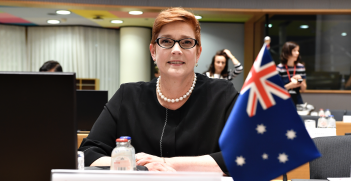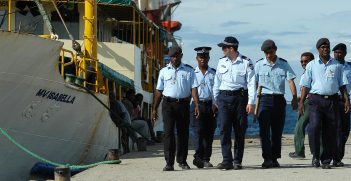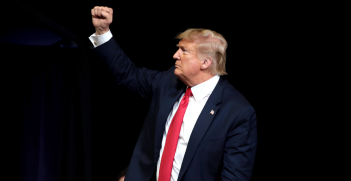The Solidarity Challenge

“The Solidarity Challenge” is the story of John Burgess, who was the former Australian Ambassador to Poland from 1980-81. His account comprises of the critical events that took place in Poland at the time.
John Burgess was appointed to Warsaw after previous postings in Indonesia at the time of the 1965 “coup,” in Hong Kong as a China-watcher and in Moscow which had made him well suited to understand the nuances and implications of events in Poland in those two years.
Those events were of course remarkable for a country still a member of the Warsaw Pact, involving the rise of Solidarity from a shipyard workers’ union to the status of de facto national opposition, privately conceded by officials of the ruling Polish Communist Party to have a much greater public following and acceptance than the Party itself. Burgess notes the characterisation of what was going on as a struggle between “the State and the nation,” and that is a good way to look at it.
There were some large personalities involved, including Lech Walesa, the charismatic leader of Solidarity, and Pope John Paul II, himself a Pole, who received rapturous welcomes from an overwhelmingly Catholic population during his visits to Poland.
In contrast Burgess describes Kania, the First Secretary of the Polish Communist Party for most of the two years, as a “retiring, almost diffident, avuncular figure.” In a cable to Canberra of May 1981 Burgess described the Party as “in effect…(moving) towards Solidarity rather than towards Soviet orthodoxy.”
This of course introduces the other horn of the dilemma that the Communist Party and Government was facing. The Politburos of the former Soviet Union (USSR), and of Soviet satellites, such as East Germany, were appalled by what was going on in Poland and the apparent inability of the authorities to control the spread of “free” trade unionism. This had gone so far that by late 1981 the more radical elements of Solidarity were issuing calls for “free trade unions of the Soviet bloc to unite.”
So what would the Soviet Union do? Would it intervene militarily as it had in Hungary and Czechoslovakia if things continued to go, as it saw it, from bad to worse? This was the major concern of the two years that Burgess raises for Poland, Soviet Union and its satellites. Additionally, it also concerns the Western world, including Australia because of what such an intervention could mean for future directions of the Cold War and East-West relations.
Prime Minister Fraser made more than one statement on the Polish situation, and Foreign Minister Street visited Poland in November-December 1981, ironically just before the imposition of martial law, in the course of which he had useful discussions with senior government and non-government figures, including Archbishop Glemp and Walesa himself.
Of course the USSR had many avenues to influence events and personalities in Poland. Polish leaders knew Soviet leaders well, met and talked with them often — plenty of opportunities, which were taken, for jaw-boning by the Soviets — and by and large regarded them as their seniors. The Polish economy was not doing well, really stagnant and was very dependent on Soviet aid and supplies of fuel. Militarily Poland abutted the Soviet Union, provided the corridor by which Soviet troops moved to and from East Germany, and could not expect to be able to resist Soviet moves to coerce Poland by armed force.
In the end, though, a change of leadership of the Polish Communist Party brought into power Wojciech Jaruzelski, a former army general, who reluctantly concluded that faced with an ever cockier and ambitious solidarity the authorities had to either cede power or do something, and that the authorities to do that something had to be Polish. He imposed martial law on the morning of 13 December 1981, solidarity leaders were arrested and the organisation placed under strong constraints.
There are many particularly interesting aspects to Burgess’s book which includes, as well as his account of the developing situation as it appeared at the time, a selection of declassified cables to and from the embassy, accounts of the workings of the embassy and the roles and contribution of staff members, and also chapters headed “Behind the Scenes,” based on material from various players’ archives that became available years after the events they described.
From them for example we can trace the evolution of the attitudes of the ageing members of the Soviet Politburo, from seriously considering armed intervention to a final position from which they flatly rebuffed Polish government requests for Soviet back-up in the event that the imposition of martial law ran into difficulties. Among other things they were very aware of the problems they were encountering in Afghanistan, difficulties with the Soviet economy, and the likelihood of strong “international costs” if they intervened militarily. In a way they were in the same kind of dilemma as their colleagues in the Polish party, torn between the perils of inaction and the consequences of action.
So it’s a fascinating story and in itself is as an episode with obvious relevance to contemporary circumstances — think of China and Hong Kong, and as an account of the workings of a small Australian Embassy at a time of critical importance to its country of accreditation and well beyond.
Geoffrey Miller is a former Australian diplomat and government official. He was posted in Kuala Lumpur, Jakarta, New York (United Nations) and New Delhi. He is a former president of AIIA NSW and national vice-president.
This article is published under a Creative Commons Licence and may be republished with attribution.





